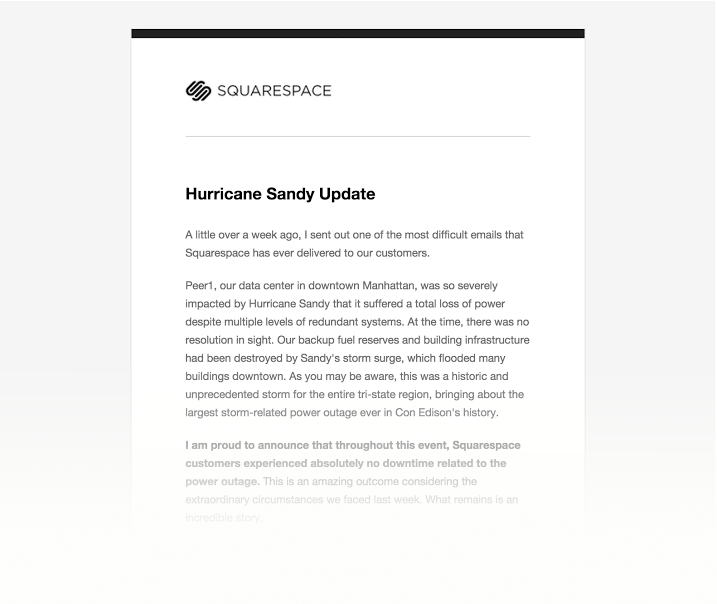Our Search for Reliable Green Web Hosting

Mightybytes has been on a years-long quest to find the perfect green web hosting partner. In this post, we outline just how challenging that search is and outline some lessons learned along the way.
In 2011, our first B Corp certification inspired us to dig deeper into company sustainability practices. This went beyond the office recycling bins or or LED lightbulbs we were already using. We reviewed all company processes, policies, and practices to identify paths to improvement.
In addition to our work on sustainable web design and greening the office, we identified green web hosting powered by renewable energy as a meaningful way to minimize the environmental impact of both our company and our work for clients.
Armed with a bit of web host knowledge (and admittedly some naive optimism), we set out on what would turn into a years-long quest to find a great green web hosting provider with whom we could forge a long-term, mutually beneficial relationship. We had just a few criteria:
- Commitment to powering data centers with renewable energy
- Dedication to customer satisfaction
- Security, speed, uptime, and other technical requirements
Sure, we also wanted affordable pricing and a few other things as well. However, the three points above were top priority.
This was in the early 2010s. Unfortunately, we’re still searching well into the 2020s. Below are some challenges we’ve run into on this journey.
People, Planet, Pixels, Power
Auditing our supply chain is part of the B Corp certification process mentioned above. Since that supply chain is comprised primarily of the people we employ to build our websites and the servers used to power them, creating a long-lasting relationship with a web hosting provider that uses renewable energy is a good strategic endeavor for us.
Also, as a web design and software development shop, we are in a great position to refer hosting services to our clients, something we were sure would provide added incentive to anyone we approached about a partnership.
Turns out, not so much. Who knew this would be such a challenging request to fill? Since embarking on this endeavor, we have started—and ended—relationships with nearly a dozen green web hosting providers.
For the reasons mentioned above, we looked first for companies committed to 100% renewable power, but on several occasions had to fall back to those that use RECs as part of their energy mix. (See our post on Web Hosting: Renewable Energy and Renewable Energy Credits to learn more about the difference between RECs and renewable energy.)
Two Missing Ingredients
To date, we have found that most green web hosts we have worked with lack two key components of running a successful business:
- Reliability
- Good Customer Service
Site reliability and customer service (or lack thereof) proved to be the primary factors that caused us to sever relationships with green web hosting providers again and again. What these companies have in their commitment to the environment they seem to lack in these other areas. At least this has been our experience.
Based on our several years of auditing green web hosting companies, here are a few suggestions on how they might improve their business to better serve customers while also simultaneously growing the renewable energy-powered internet.
Reliability
By far, the most common problem we had when working with these companies was reliability in site uptime. Websites went offline unexpectedly and repeatedly from provider to provider. Someone once said to me, “Well, of course those sites are going down. It’s probably not a windy day in Oregon.” Smirk.
My advice to these providers: do what you need to in order to guarantee 24-7-365 uptime for sites on your servers. Make this your biggest priority. If it means going out to the grid to supplement your electricity use, so be it. It’s better than getting a reputation for hosting sites that crash all the time. Without reliable site uptime, no one will want your services. Then it doesn’t matter how clean your energy source is. No one is using it anyway.
Squarespace’s efforts to keep their 1.4 million websites online during Hurricane Sandy is a great example of one company’s commitment to reliable hosting services. During the disaster, the company got permission to carry fuel into their datacenter in plastic bottles to keep the servers running. Several team members stayed on-site during the storm to do so if that was required. Now that’s commitment!
Of course Hurricane Sandy is an extreme example, but it proves my point. Green web hosting providers should focus on making server reliability one of their biggest priorities, doing whatever possible to guarantee the best possible uptime for sites on their servers.
Customer Service
A lack of good customer service went hand-in-hand in with the aforementioned unreliable hosting. In a few cases, it seemed like the support staff was one guy poking around to fix issues in his free time. Not only were many of these companies not able to help us when websites went offline, but they also often seemed genuinely disinterested in doing so. At least twice, the responses we received were indifferent at best and oftentimes terse, their accompanying suggested solutions ill-conceived. One issue took over two weeks to resolve.
In some respects, this is understandable—growth can be a significant challenge for any small business. But it is not acceptable. If these companies want to scale—and in order to bring more sustainability to the internet, we definitely want them to scale—they need to have nothing short of top-notch customer service: professional, responsive, and delivered by experts. Green web hosting providers could learn a few lessons from the examples in this story on Helpscout.
All this said, the purpose of this post is not just to call out green web hosting providers on crappy service. On the contrary, we should band together with them to collectively move toward an internet powered by renewable energy. They will have significant scaling challenges, however, if they don’t make great customer service and hosting reliability a top priority. Right now, for Mightybytes at least, this is keeping the promise of an internet powered by renewable energy from becoming a reality.
Green Web Hosting, Greener Internet
Greenpeace’s Clicking Clean report evaluates the energy demands of the internet and energy choices made by individual internet companies. While Greenpeace’s report gives the internet’s biggest players—Google, Apple, Amazon, Facebook, and their ilk—most of its attention regarding how they are (or are not) transitioning to renewable energy, the rest of the internet has some serious electricity needs as well.
What about the tens of millions of smaller companies, nonprofits, and local governments that inhabit the less trafficked regions of the internet? Most of these companies either rent server space in shared facilities or host their operations with cloud computing vendors and content delivery networks. Mightybytes and most of the web design shops we know fall into this category. How can these organizations transition to renewable energy for their data needs?
I was unable to find any figures on renewable energy use of the smaller colocation companies for this post, but of those audited in Greenpeace’s report—many of which supply server space to the types of companies mentioned above—the average amount of clean energy powering their servers was barely over 14%, which is on par with renewable energy production in the United States. That number is only 13%. So clearly there is significant room for improvement as we move to a clean energy-powered internet.
To complicate matters, some of these companies are ‘going green’ by buying Renewable Energy Credits (RECs), which is a baby step forward, but does nothing to improve the supply of electricity powering their servers. Thus, it’s not a recommended approach.
For some companies who may have access to renewable energy sources or the funds to build them but see RECs as an easier way out, this is more of a marketing ploy than a valid sustainable strategy, further confusing an already indifferent public that thinks the internet is a green medium because it replaces paper.
The Perfect Storm
Although we have spent a considerable amount of time and resources on identifying a green host, we have yet to hit the trifecta: a company that is purpose-driven with great customer support and that also happens to be powered by 100% renewables. We won’t stop looking. Our business, clients, and planet depend on it. I know that when we get there, we’ll all win big.
— Andrew Boardman, Mangrove Web Development
When you combine the small number of renewable energy-powered web hosting options available with unreliable servers and sometimes questionable customer service practices it is no surprise that few people have shifted their site hosting away from bigger, cheaper, and arguably more stable hosting providers.
What the Greenpeace report and our experience highlights is that a huge gap exists between the efforts of behemoth companies to minimize their online impact and what the rest of us who build or otherwise inhabit the internet are doing to make the web more sustainable. Mightybytes remains committed to hosting our websites on servers powered by renewable energy, and we’re not the only ones. There is a growing number of companies looking for better, more sustainable data solutions.
So I’m throwing down the gauntlet, green web hosting providers: there is a growing opportunity here. Let’s work together to meet it. Quickly.
As Greenpeace’s report notes, “Data center operators and cloud computing vendors will prioritize powering with renewable energy only when their customers demand it, and those customers need to step up to the challenge.” This is Mightybytes, stepping up.
If you want more information on this topic, consider checking our posts on sustainable web design or how to get started today on digital sustainability. Want to find out how green your own website is? Check out Ecograder at the link below.
Digital Carbon Ratings, now in Ecograder.
Understand how your website stacks up against industry carbon averages with this new feature.
Try Ecograder




